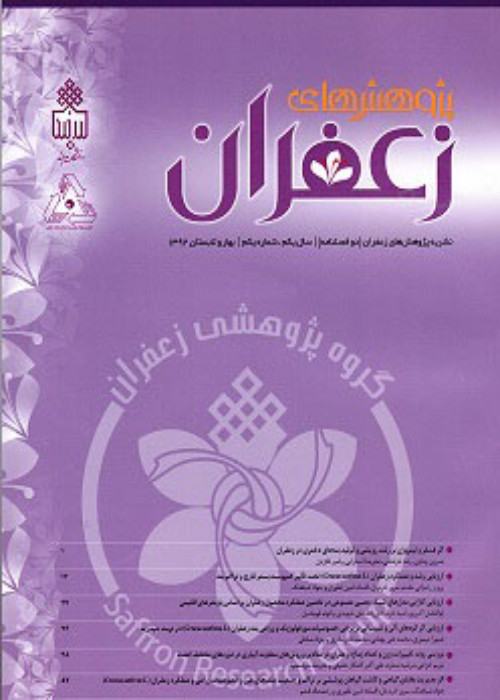The Status of Production of Saffron and Pistachio Currency Converter Products and its Effects in Rural Households (Case Study: Roshtkhwar Rural District)
Saffron and pistachio are exceptional plants that, while requiring little water, have good economic efficiency and currency earning, and considering the deprivation of significant parts of Khorasan and lack of water in them, it is one of the factors that encourage and perpetuate hardworking farmers. This region is suitable to saffron and pistachio cultivation. According to the available statistics, in 2010, the area under saffron cultivation in our country reached 72162 hectares, and with this amount, our country is the largest producer of saffron in the world. In this regard, Roshtkhwar county in Razavi Khorasan province is one of the prominent counties in saffron and pistachio production. The evaluation of the impact of various factors affecting the cultivation of saffron and pistachio in this county confirms that the parts located in Roshtkhar county have the necessary conditions for planting and increasing the area under cultivation of these products. In the present research, the villages of Roshtkhar village located in Razavi Khorasan province have been taken into consideration as examples and witnesses. Saffron and pistachio, as the two main products of this rural district, have started a fierce competition for allocating more land than other crops such as wheat, barley, and white onion in rural district for nearly a decade. Cultivation of two crops, pistachio and saffron, together has created opportunities for the farmers of this region. Therefore, this research tries to investigate the production status of pistachio and saffron currency converter products and its effects in the rural households of Roshtkhar rural district.
Roshtkhar rural district has 26 inhabited villages, from the north and west to Torbat Heydarieh county, from the east and southeast to Khaf county and from the south to Gonabad county.This research has been done by descriptive-analytical method. Field research studies have been conducted at the village and household level. In this regard, the production status and effects of saffron and pistachio were investigated in 383 saffron and pistachio farming households living in 26 villages of this village. Data collection has been done based on selected indicators and using village and household questionnaires. Statistical analyzes and TOPSIS, SPSS and ArcGIS software were also used for data analysis.
The findings of the research on the frequency distribution of farmers based on the type of their crops for the past five years show that before pistachio cultivation, 30.8% of farmers cultivated wheat and 23.2% of them cultivated white onion along with saffron.On the other hand, the frequency distribution of farmers in the studied samples based on the area of land under pistachio cultivation indicates that currently 31.4% of farmers have one to one and a half hectares of land under pistachio cultivation. Also, 18.1% of them also have one to one and a half hectares of land under saffron cultivation.Statistical analysis has been used to compare the cultivated area of valuable pistachio and saffron crops in two groups of villages with lower and higher impact intensity. The results of the Mann-Whitney test show that there is a significant difference between these villages at the 99% confidence level. Based on this, the villages that have more cultivated and production areas, the effects of these extremely income-generating products (such as increasing the motivation to stay in the village, the desire for reverse migration from the city to the village and financial participation for the development of the village) are more compared to other villages.
It can be inferred from the results of the research, considering that the water resources in this village are becoming more limited and at the same time, the water resources in some villages are becoming saline. In this way, the challenges of saffron production increase. On the other hand, due to the greater resistance of pistachio to water shortage and at the same time its greater tolerance to salty water sources, the future challenges caused by the above changes for saffron cultivation are a new opportunity to replace pistachio instead of saffron. Therefore, while the challenges for saffron production will intensify in the future at the level of the studied villages, it seems that it will provide a new opportunity to replace the pistachio product instead of the saffron product at the level of Roshtkhwar rural district.
- حق عضویت دریافتی صرف حمایت از نشریات عضو و نگهداری، تکمیل و توسعه مگیران میشود.
- پرداخت حق اشتراک و دانلود مقالات اجازه بازنشر آن در سایر رسانههای چاپی و دیجیتال را به کاربر نمیدهد.



